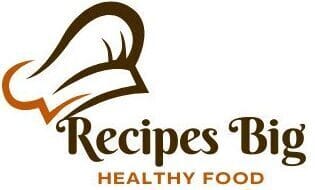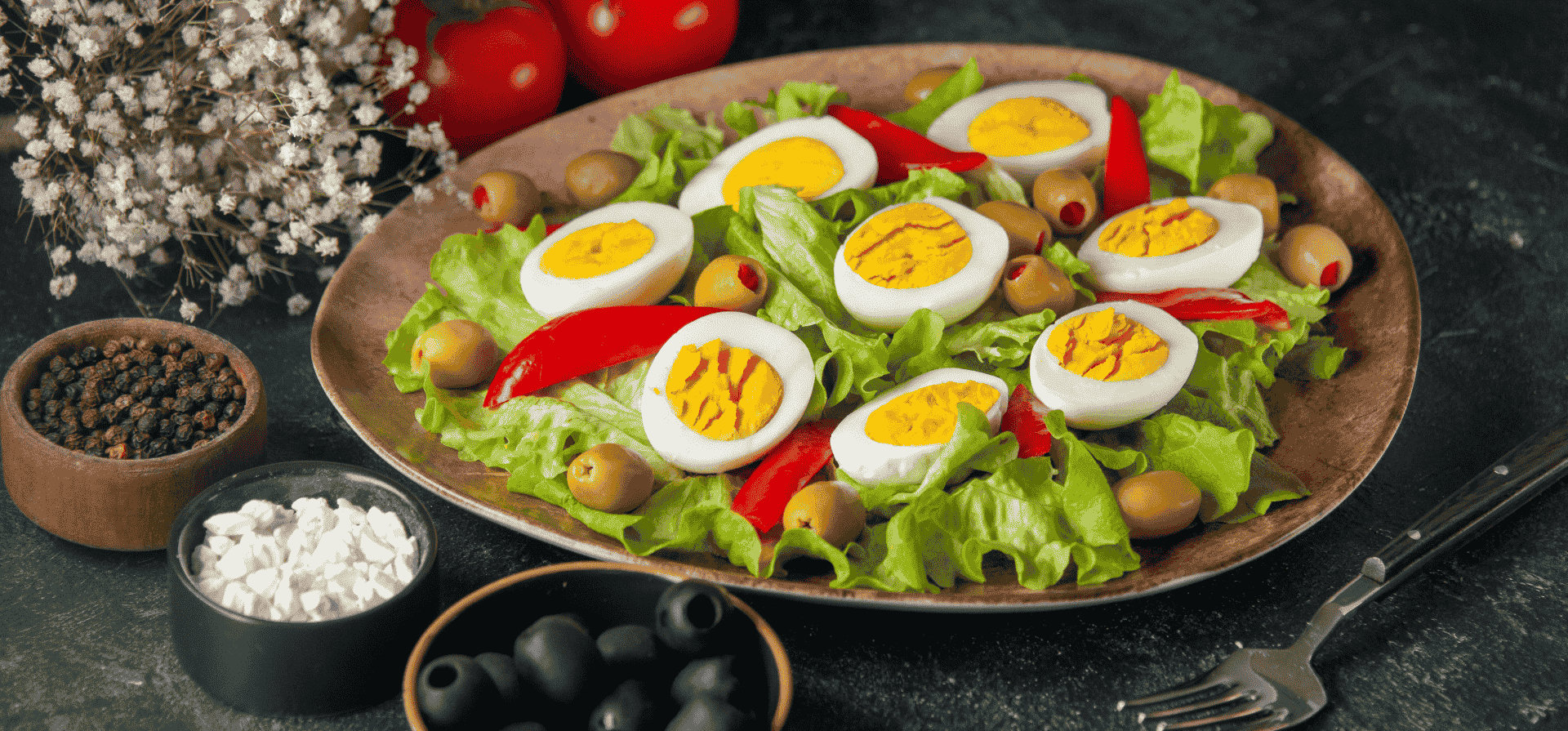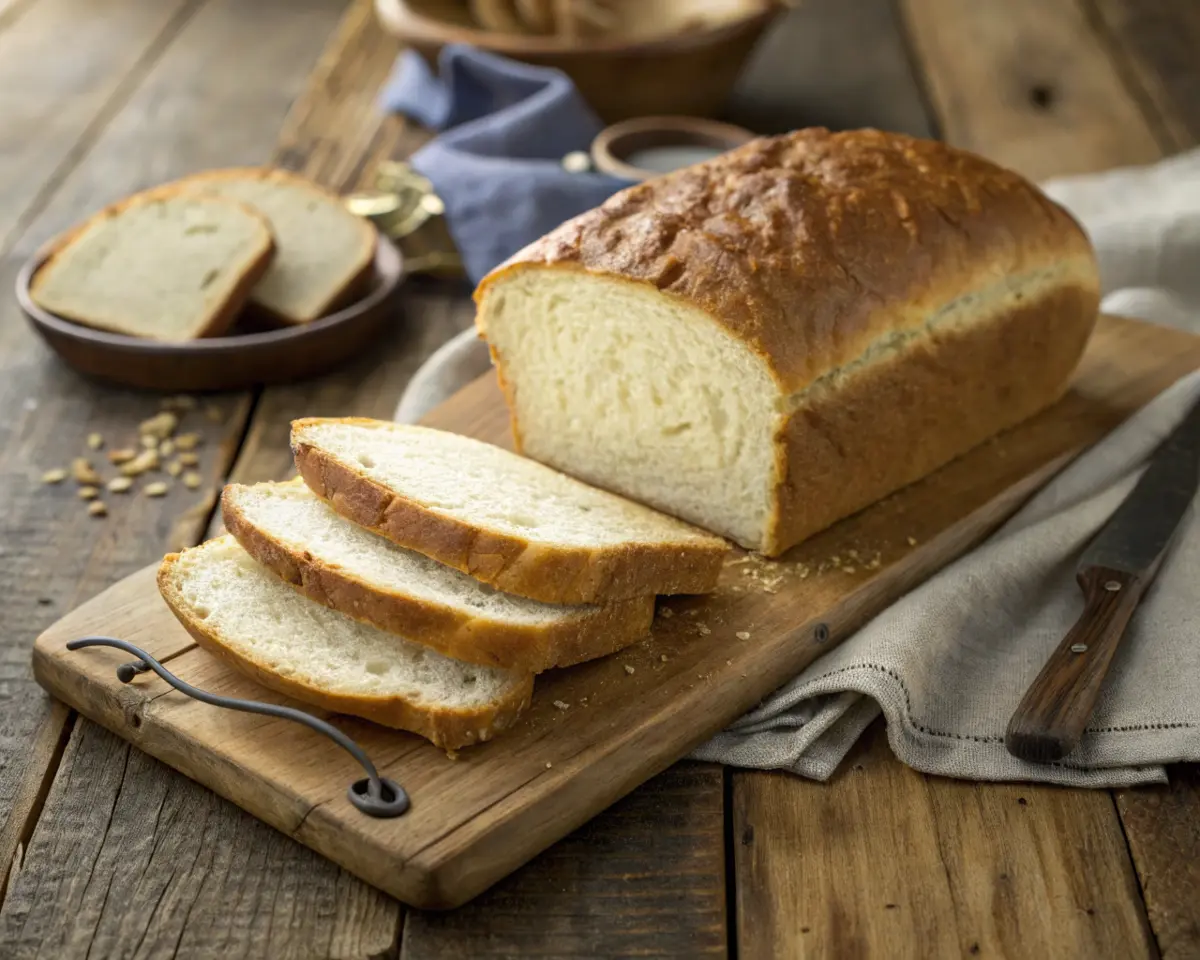Ultimate Guide to Gluten-Free, Egg-Free Bread: Recipes, Tips & Benefits
Bread is a staple in many diets, but for those with dietary restrictions, such as gluten or egg intolerance, finding a suitable bread alternative can be a challenge. Fortunately, gluten-free egg-free bread is a fantastic solution. This guide will walk you through everything you need to know—from understanding what makes this bread unique to learning how to bake it at home, troubleshooting common issues, and exploring delicious variations. Whether you’re new to gluten-free baking or a seasoned pro, there’s something here for everyone.
Understanding Gluten-Free, Egg-Free Bread
What Is Gluten-Free, Egg-Free Bread?
Gluten-free egg-free bread is a type of bread that excludes both gluten and eggs from the ingredients list. Gluten is a protein found in wheat, barley, and rye, which gives bread its chewy texture. Eggs typically help bind the ingredients together and provide structure. But what if you have a sensitivity or allergy to these ingredients? That’s where gluten-free, egg-free bread comes in.
This type of bread is perfect for those who follow a gluten-free diet due to conditions like celiac disease or gluten sensitivity. It’s also a go-to for vegans, people with egg allergies, or those simply avoiding eggs for health reasons. While traditional bread recipes use wheat flour and eggs, gluten-free egg-free bread relies on alternative flours and natural egg substitutes to achieve a similar texture and taste.
Why Choose Gluten-Free, Egg-Free Bread?
There are several reasons why people might opt for gluten-free egg-free bread. Health concerns top the list for many. Some individuals may suffer from conditions like gluten intolerance or egg allergies, and consuming gluten or eggs can lead to unpleasant or even harmful reactions. For others, choosing to eliminate gluten or eggs is a personal lifestyle choice—be it for veganism or simply to try something new.
Additionally, gluten-free and egg-free bread offers a way to enjoy bread without compromising on health. Gluten-free bread can be a good alternative for those seeking a lighter option that’s easier on digestion, especially for those with sensitive stomachs. The absence of eggs also makes it a wonderful option for people who are avoiding animal products or have ethical reasons for excluding eggs from their diet.
Whether you’re seeking health benefits, following a specific dietary restriction, or just want to try something new, gluten-free egg-free bread is a tasty and versatile choice.
Essential Ingredients for Gluten-Free, Egg-Free Bread
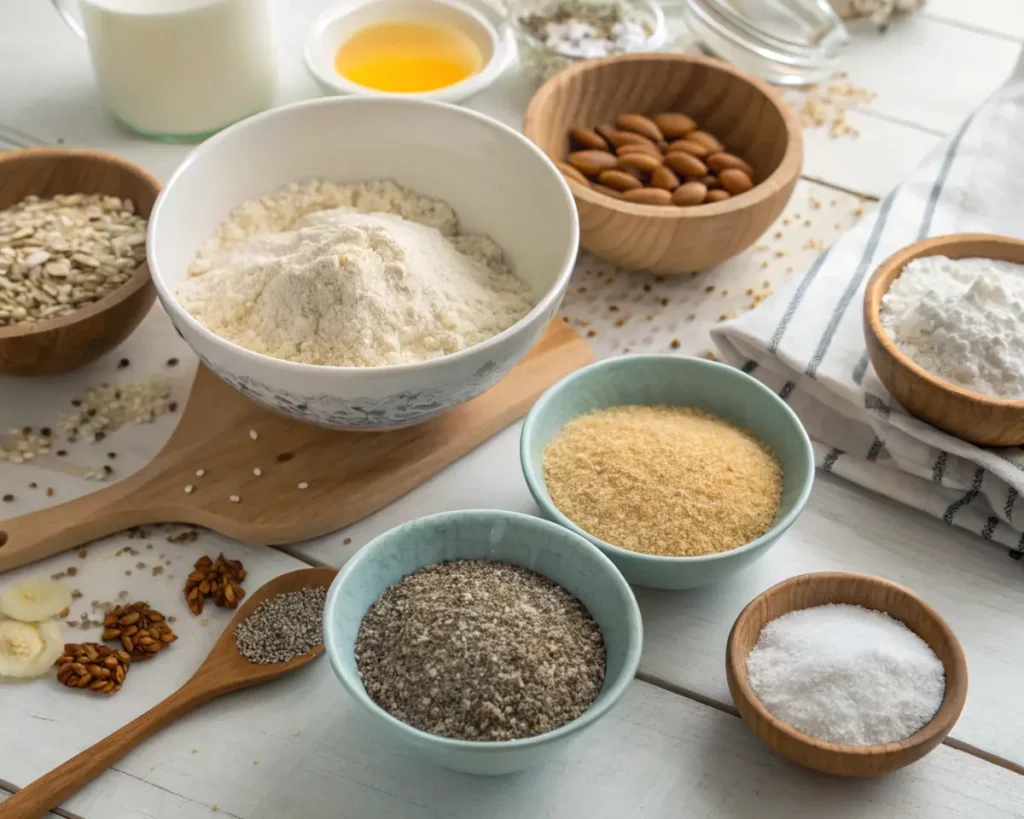
Gluten-Free Flours
When baking gluten-free egg-free bread, the first thing you’ll notice is that traditional wheat flour is absent. Instead, you’ll use gluten-free flours to create a bread that’s both tender and airy. The most popular gluten-free flours include rice flour, almond flour, and coconut flour. Each flour has its unique properties, so you might need to experiment a bit to find your favorite combination.
- Rice Flour is often the foundation of many gluten-free bread recipes. It’s mild in flavor and provides a soft texture.
- Almond Flour is made from finely ground almonds and adds a slightly nutty flavor. It also helps create a moist bread.
- Coconut Flour absorbs a lot of liquid, so it’s usually used in smaller amounts. It can add a subtle coconut flavor and works well when paired with other flours.
Many bakers use a combination of these flours to get the best results in texture and flavor.
Egg Substitutes
Since eggs are typically used to bind ingredients in traditional bread recipes, finding a good egg substitute is key to making gluten-free, egg-free bread. Fortunately, there are several egg alternatives that work wonders in baking. Here are a few popular ones:
- Chia Seeds: When mixed with water, chia seeds create a gel-like consistency, which acts as a binder in gluten-free bread. You can replace one egg with 1 tablespoon of chia seeds and 3 tablespoons of water.
- Flaxseeds: Similar to chia, flaxseeds can be mixed with water to create a thick gel. This works great as a binding agent. Just mix 1 tablespoon of ground flaxseeds with 3 tablespoons of water to replace one egg.
- Aquafaba: This is the liquid from canned beans (usually chickpeas). It has a similar consistency to egg whites and can be whipped up to add structure and moisture to your bread. Three tablespoons of aquafaba are equivalent to one egg.
Leavening Agents
To make sure your gluten-free egg-free bread rises properly, you’ll need a leavening agent. While traditional bread recipes often use yeast or baking powder, there are a few other options to help your dough rise:
- Baking Soda: This works well in combination with an acid (like lemon juice or vinegar) to create bubbles, which help the bread rise.
- Yeast: For that classic bread texture, yeast is often used in gluten-free recipes. It requires a bit more patience, but it gives your bread a chewy texture and distinct flavor.
Additional Ingredients
Some additional ingredients can help improve the texture and taste of gluten-free egg-free bread. These include:
- Psyllium Husk: It helps provide structure and moisture, making the bread more pliable.
- Xanthan Gum: This is often used as a thickener and helps bind the bread together. It’s essential in gluten-free baking to ensure the dough doesn’t fall apart.
Below is a summary of the key ingredients used in gluten-free egg-free bread recipes:
| Ingredient | Purpose | Unit (USA) |
|---|---|---|
| Rice Flour | Provides a soft texture | 1 cup (120g) |
| Almond Flour | Adds moisture and a nutty flavor | 1 cup (96g) |
| Coconut Flour | Absorbs liquid and adds a coconut flavor | 1/4 cup (28g) |
| Chia Seeds | Binds ingredients and adds moisture | 1 tbsp (15g) |
| Flaxseeds | Binds ingredients, adds moisture and texture | 1 tbsp (7g) |
| Aquafaba | Acts like egg whites, provides structure | 3 tbsp (45ml) |
| Baking Soda | Helps the bread rise when combined with an acid | 1 tsp (4g) |
| Yeast | Adds flavor and chewy texture | 1 tbsp (9g) |
| Psyllium Husk | Improves structure and moisture retention | 1 tbsp (5g) |
| Xanthan Gum | Provides stability and binds ingredients | 1 tsp (2g) |
Step-by-Step Guide to Baking Gluten-Free, Egg-Free Bread
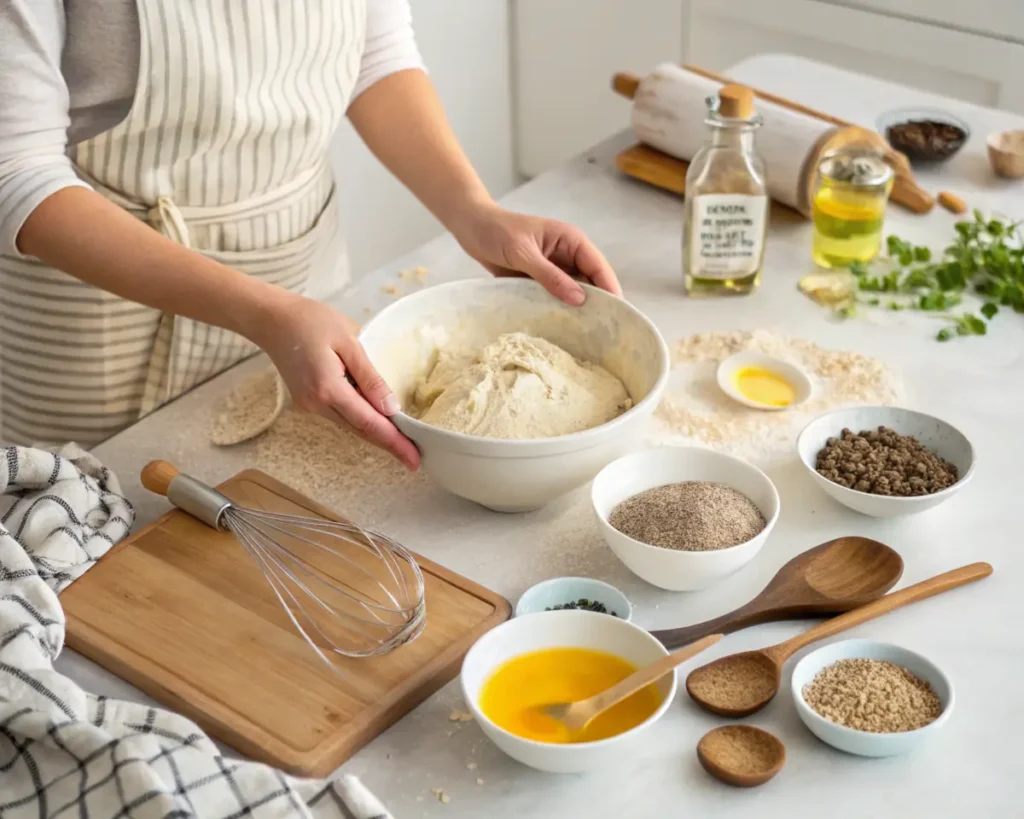
Preparation
Before you start baking gluten-free egg-free bread, make sure you have all your ingredients ready. Gluten-free bread requires precision, so it’s essential to measure your ingredients carefully. You’ll also need some equipment: a mixing bowl, measuring cups, a whisk, and a loaf pan. Preheat your oven to the specified temperature (usually 350°F or 175°C) to ensure your bread bakes evenly.
Mixing the Dough
Once you have all your ingredients, the first step is to combine the dry ingredients in one bowl and the wet ingredients in another. Mix your gluten-free flours, baking soda, and any other dry ingredients together. In a separate bowl, combine the wet ingredients, such as water, oil, and any egg substitutes like chia gel or aquafaba.
When mixing the dough, be sure not to overmix it. Gluten-free dough behaves differently than regular dough, and overmixing can result in a denser loaf. Gently stir until the mixture is just combined.
Kneading and Proofing
Unlike traditional bread, gluten-free egg-free bread doesn’t require much kneading because there’s no gluten to activate. However, you’ll still need to shape the dough and let it rise. Transfer the dough into a greased loaf pan, and let it rise for 30 minutes to an hour. The dough should double in size, depending on the recipe and your environment.
Proofing (the process of letting the dough rise) is crucial to achieving that soft, airy texture. If you’re using yeast, make sure the dough is in a warm, draft-free spot for optimal rising.
Baking
Once your dough has risen, place it in the preheated oven. The baking time will vary depending on the size of your loaf and your oven, but generally, gluten-free egg-free bread takes about 35-45 minutes to bake.
You’ll know the bread is done when it sounds hollow when tapped on the bottom or when the internal temperature reaches about 200°F (93°C). Once done, remove the bread from the oven and let it cool before slicing.
By following these simple steps, you can easily bake your own gluten-free egg-free bread at home. The key is patience and practice, so don’t be discouraged if your first loaf isn’t perfect.
Troubleshooting Common Issues in Gluten-Free, Egg-Free Bread
Dense or Heavy Texture
One of the most common issues when baking gluten-free egg-free bread is a dense or heavy texture. This can happen for several reasons, but the most common one is using the wrong flour blend. Gluten-free flours like almond or coconut flour can sometimes result in a denser loaf compared to wheat flour. To avoid this, consider experimenting with a mixture of different gluten-free flours, such as rice flour and potato starch, to achieve a lighter texture.
Another reason for density could be inadequate leavening. If you’re using yeast, be sure the dough has enough time to rise, and always ensure the yeast is fresh. Baking soda or baking powder may also need to be properly balanced with acidic ingredients like vinegar or lemon juice to help the bread rise effectively.
Crumbly or Dry Loaf
A crumbly or dry loaf is another common issue. This can happen if the dough is not hydrated enough, so make sure to use enough liquid or egg substitutes like aquafaba or chia seeds. If the dough seems too dry, add a little more water or plant-based milk and mix until it reaches a moist, doughy consistency.
Also, make sure you’re not overbaking your bread, as it can dry out quickly. Always check the bread’s internal temperature, aiming for around 200°F (93°C). The bread will also stay softer if stored properly after baking.
Uneven Rising
Sometimes, gluten-free egg-free bread doesn’t rise evenly, which can lead to an uneven texture. This is usually caused by improper proofing. Ensure your dough is placed in a warm, draft-free area to rise. If you’re using yeast, check that the yeast is fresh and active. If the rise is uneven, it may help to gently knock back the dough and shape it again before the final rise.
Delicious Variations of Gluten-Free, Egg-Free Bread
Sweet Breads
Gluten-free egg-free bread isn’t just for savory recipes—there are plenty of delicious sweet variations to try! For example, banana bread made without eggs and gluten can be wonderfully moist and flavorful. Simply replace eggs with chia or flaxseed mixture and use gluten-free flours to get a soft, delightful loaf.
Another option is pumpkin bread. Pumpkin adds moisture and a natural sweetness to your bread, and it’s a fantastic way to enjoy autumn flavors year-round. You can spice it up with cinnamon, nutmeg, or cloves for a warming, comforting treat.
Savory Breads
If you’re craving something more savory, you can make a flavorful herb-infused gluten-free egg-free bread. Adding rosemary, thyme, or even garlic can elevate your bread, creating a wonderful accompaniment to meals like soups and salads. You can also experiment with cheese substitutes for a dairy-free, savory loaf.
One popular savory option is garlic and rosemary bread, which is rich in flavor but still soft and fluffy thanks to the gluten-free ingredients. Just remember, if you’re using an egg substitute like aquafaba, you’ll still get the desired texture, but with that rich herby kick.
Specialty Breads
For those who want something truly unique, you can experiment with gluten-free egg-free sourdough or even flatbreads. Gluten-free egg-free sourdough is a bit more advanced to make, but it provides that signature tangy flavor and chewy texture. It requires a sourdough starter but can be very rewarding if you’re looking for a bread with complex flavor.
Alternatively, you can try a quick and simple gluten-free egg-free flatbread that’s soft, pliable, and perfect for wrapping up your favorite fillings. These flatbreads can be made in under 30 minutes and offer endless variations with different spices and toppings.
Nutritional Benefits of Gluten-Free, Egg-Free Bread
Caloric and Nutrient Comparison
When it comes to gluten-free egg-free bread, the nutritional profile is different from traditional wheat bread, primarily due to the absence of gluten and eggs. Typically, gluten-free egg-free bread can be lower in calories and fat compared to conventional bread, especially when made with almond flour or coconut flour, which are lower in carbohydrates. These flours also provide healthy fats, which are beneficial for heart health.
Additionally, many of the flours used in gluten-free recipes, such as rice flour and almond flour, are rich in essential vitamins and minerals like vitamin E, magnesium, and potassium. These nutrients contribute to overall well-being and provide a healthy alternative for those with dietary restrictions.
However, it’s important to note that some gluten-free breads can be higher in sugars and preservatives, especially store-bought versions. To get the most nutritional benefit, it’s best to make gluten-free egg-free bread at home using natural, whole ingredients.
Health Advantages
Choosing gluten-free egg-free bread can offer several health advantages. For those with gluten intolerance or celiac disease, it’s crucial to avoid gluten, as it can lead to digestive discomfort or even long-term health complications. On the other hand, the egg-free aspect makes it an excellent option for vegans or individuals who are allergic to eggs.
In addition to being easier on digestion, this bread can also help reduce the risk of inflammation associated with gluten and egg consumption. By switching to gluten-free and egg-free alternatives, you may find that your digestive system feels less bloated and more balanced.
Overall, gluten-free egg-free bread can be a great addition to a balanced, health-conscious diet, especially when prepared with nutrient-dense ingredients.
Frequently Asked Questions
Can I Make Gluten-Free, Egg-Free Bread Without Special Ingredients?
While gluten-free egg-free bread does require specific ingredients like gluten-free flour blends and egg substitutes, you can still make bread without purchasing specialty items. For example, using flaxseeds or chia seeds as egg replacers can be an easy and affordable solution. Additionally, baking soda or baking powder combined with an acid (like vinegar or lemon juice) can serve as leavening agents instead of more complex substitutes.
However, using high-quality gluten-free flour blends will give you the best results, as these blends are designed to mimic the properties of wheat flour. If you want to avoid specialty ingredients entirely, though, you can look for recipes that use more common flours like rice flour or cornstarch, which are often available in most supermarkets.
How Do I Store Gluten-Free, Egg-Free Bread?
Storing gluten-free egg-free bread properly is essential to maintaining its freshness. Unlike traditional bread, gluten-free bread tends to dry out faster. To keep it fresh for longer, store your bread in an airtight container or wrap it tightly in plastic wrap. It’s also a good idea to store it in the refrigerator to prevent spoilage, especially if the bread contains moist ingredients like fruit or vegetables.
If you don’t plan to eat the bread within a few days, freezing it is an excellent option. Simply slice the bread before freezing, so you can take out individual slices as needed. To thaw, leave it at room temperature for about an hour or toast it directly from the freezer for a quick, crispy bite.
Can I Freeze Gluten-Free, Egg-Free Bread?
Yes, gluten-free egg-free bread freezes very well. Freezing helps extend its shelf life, and it retains most of its texture and flavor once thawed. Just make sure to slice the bread before freezing it for easy access. Wrap each slice individually or place them in a freezer-safe bag or container. To thaw, simply leave it out on the counter or toast it directly from the freezer.
By following these simple storage tips, you can enjoy your gluten-free egg-free bread for a longer period and reduce food waste.
Conclusion
The Benefits of Gluten-Free, Egg-Free Bread
Making your own gluten-free egg-free bread at home not only caters to dietary restrictions but also opens up a world of possibilities. Whether you’re avoiding gluten, eggs, or both, homemade bread offers control over ingredients, making it healthier and more customizable than store-bought alternatives. Plus, it’s a fun and rewarding experience to bake your own bread, knowing it’s free from preservatives and artificial ingredients.
Tips for Successful Baking
As with any new baking venture, perfecting gluten-free egg-free bread requires some practice. Start with the basics, stick to the recipe, and don’t be afraid to experiment. If the bread is too dense, try adjusting your flour blend or adding more leavening agents. Remember that gluten-free dough is a little more delicate than traditional dough, so be gentle during the mixing and shaping process.
Key Takeaways
In conclusion, gluten-free egg-free bread is a great choice for those with dietary restrictions or anyone seeking a healthier alternative to conventional bread. With the right ingredients and techniques, you can create a delicious loaf that’s as satisfying as its traditional counterpart. Don’t hesitate to experiment with different flours, egg substitutes, and flavorings to make your bread your own. The more you bake, the better your bread will become!
